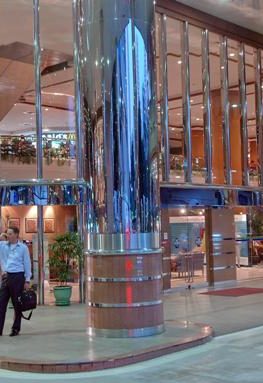Published on November 29, 2017
.jpg)
Built by Spanish colonizers in the 16th to the 18th century, four churches in the Philippines – San Agustin Church in Manila, Santa Maria Church in Ilocos Sur, Paoay Church in Ilocos Norte, and Miag-ao Church in Iloilo – bear a distinct architectural style touted as the local interpretation of European baroque. In 1993, their unique role in Philippine architecture earned them UNESCO recognition as World Heritage Sites.
Constructed with homegrown materials and resources, the churches adapted upon and combined European baroque with Filipino motifs and aesthetics. The churches’ build and design were also modified to fare better in the tropical clime. As the centuries passed, these churches exerted an outsized influence in later construction of churches around the country.
A landmark in the historic district of Intramuros, San Agustin Church is unsurprisingly the most famous and the most visited of the four. It is a fixture on many tours of the Walled City.
Travellers heading up north to enjoy the beaches in Ilocos shouldn’t miss the Church of La Nuestra Señora de la Asuncion in Santa Maria, Ilocos Sur, or the Church of San Agustin in Paoay, Ilocos Norte.
Tourists heading south to Iloilo and nearby vacation spots can take a detour to see the Church of Santo Tomas de Villanueva in Miag-ao, a municipality west of Iloilo City.


Similar Southeast Asia Experiences
The Philippines is one of only two Catholic-majority countries in Southeast Asia; the rest of the region follow other religious traditions, whose most majestic temples can be found at Bagan in Myanmar; Angkor, Siem Reap in Cambodia; and the My Son temple complex near Hoi An, Vietnam.






